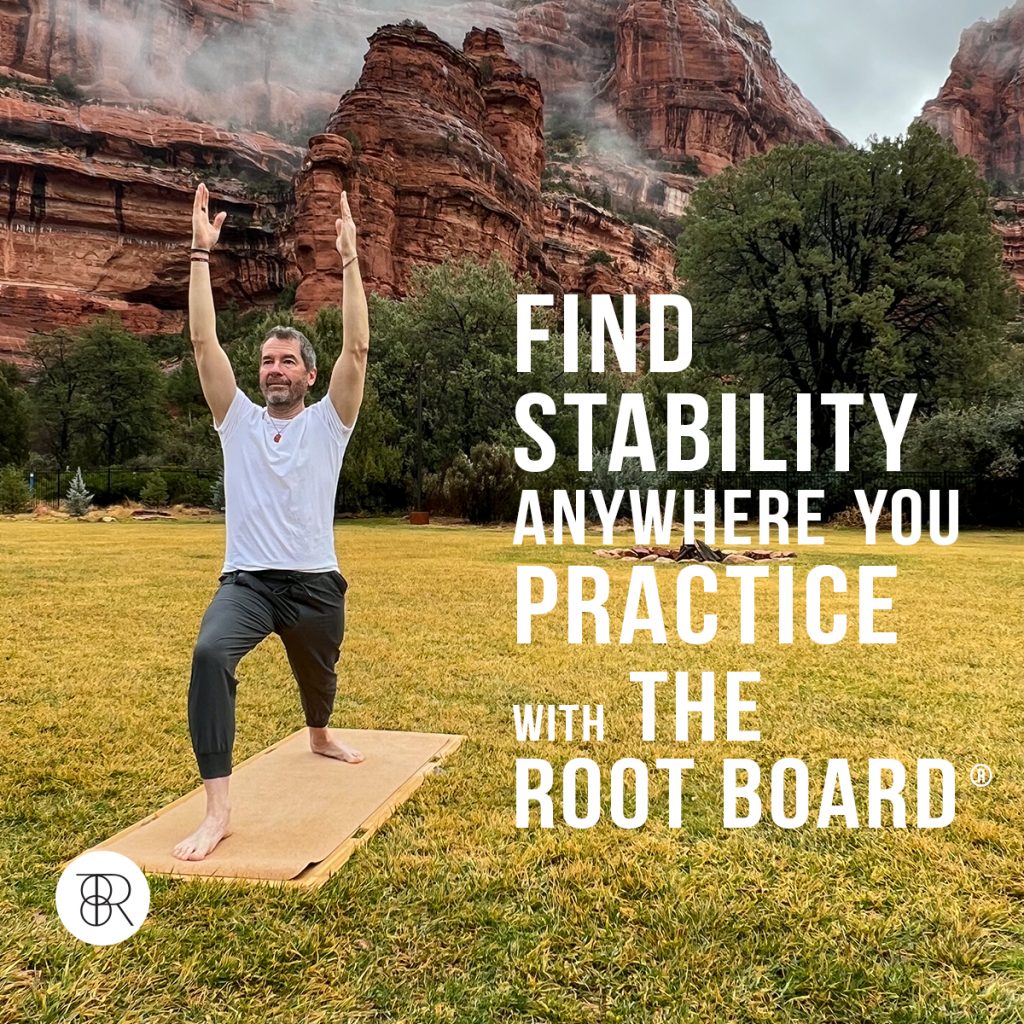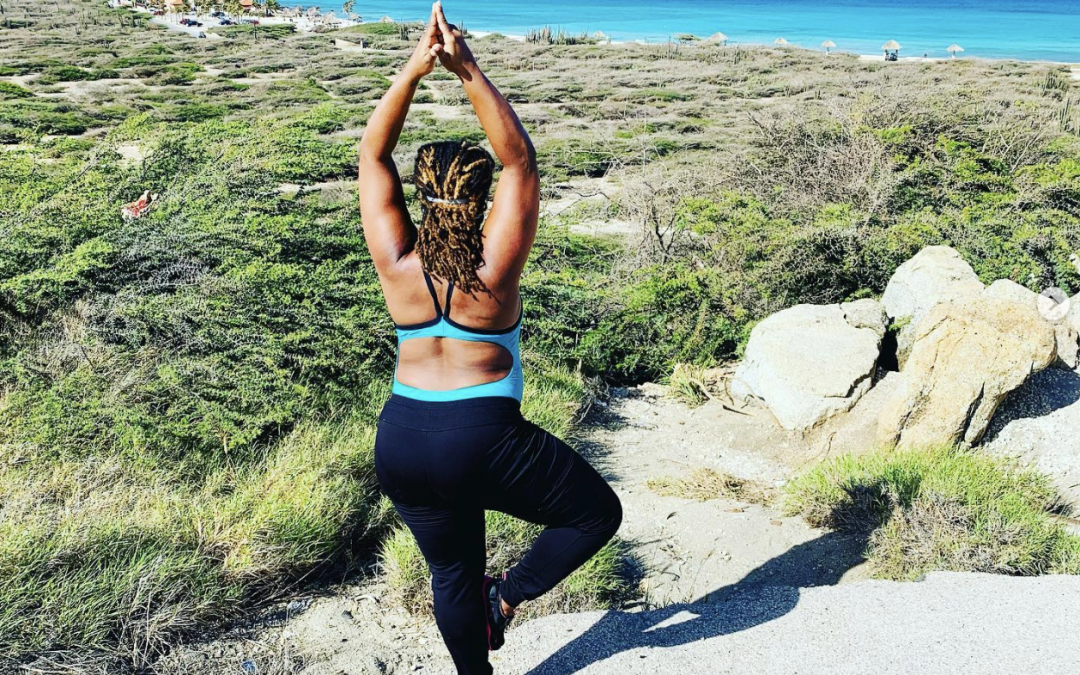
Apr 12, 2022 | Programming Spotlights, Sedona Yoga Festival Teacher Feature
When Dr. Tequilla Hill applied to be a presenter at SYF, it was something that had been on her bucket list. She’s excited to bring a couple of different kinds of experiences to the event: somatic meditation and gentle yoga that’s centered around the practice of self-compassion, followed by journaling. Her style is all about bringing folks back into themselves, creating a sense of home within. As a licensed psychotherapist, she believes that yoga is a practice in reconnection — with ourselves, our bodies, and with what keeps us well. “That’s one of the number one things I see with people who have mental health issues,” she says, “being disconnected with what keeps you well. Who are you, and what does your body need to feel optimized?”
What is Disconnection, and How Do We Get There?
“All of us have many intersections,” says Tequilla, “we play many roles.” This means that we show up in life in several different capacities for different people. Oftentimes, our body itself isn’t a center of those roles, and we neglect to prioritize what we need mentally and physically to fulfill those roles for others. This leads us to feel disconnected from our authentic best selves. We end up performing, rather than showing up in a meaningful, connected way.
“It’s hard to show up for grace and compassion if you are disconnected from yourself,” says Tequilla. “Grace and compassion have to be embodied within the self first.” Practices like journaling and somatic meditation can help us come back into the body, and reconnect with that sense of authenticity.
“There’s something very powerful about writing,” she says, though she understands that not everyone is a journaler. “That’s why I’m doing guided journaling, and giving prompts that are in alignment with the flow so that folks can have a conversation with themselves — a compassionate, graceful conversation with themself about their experience and something to gently hold themselves accountable.”
Inspired Action as a Means to Connection
Accountability is another part of the equation in the doctor’s teaching; she believes that accountability and grace go hand-in-hand. Journaling is a conduit that allows for participants to take away something that is meaningful, that they can tangibly implement in their everyday lives. But it’s important not to allow accountability to get too far into the realm of pressure, she says. According to Tequilla, it’s only with the softness of self-compassion that accountability helps us evolve, grow, and move into something different. “I’m about inspired action, not pressured action,” she says.
Similar to the concept of not only seeking therapy when things are in crisis, “you do not have to start something when it’s perfect,” she says. “The present is magical because it helps us create a future. We can pull our wisdom and our lessons from the past, and transmit that energy into power,” she says. That’s what inspired action is all about. And it’s a practice — it can be easy to be distracted and forget the path. Practice makes mastery, says Tequilla, and showing up as your best and most connected self is no different.
She recognizes that as a teacher facilitating this experience, that practice extends to herself as well as her students. First and foremost, she says, she will show up with grace for herself, without the pressure to perform. This will then extend that level of grace “so that people can have whatever experience they want to have with me, as long as they’re present with me and give themselves the freedom to allow whatever comes up,” she says.
Experience this deep and gentle work with Dr. Tequilla Hill in person this June! Tickets on sale now: https://bit.ly/SYF22Tix
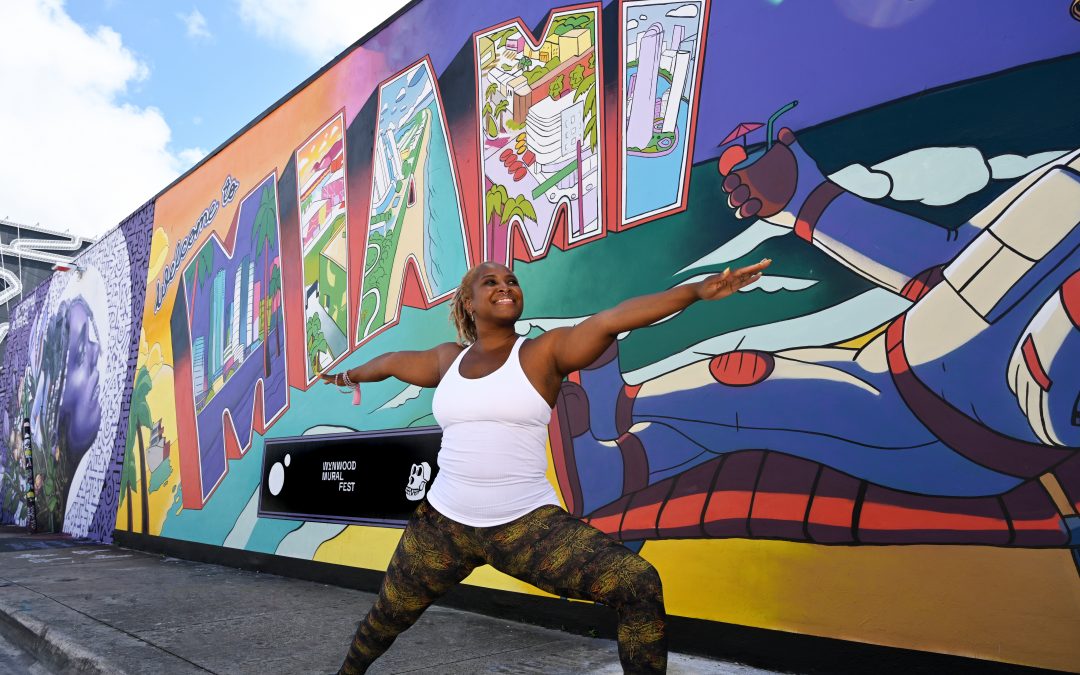
Apr 7, 2022 | Programming Spotlights, Sedona Yoga Festival Teacher Feature
For Shanna Small, yoga instruction isn’t about the physical practice — and can be as much about adapting tradition as needed for all practitioners to find flow. Her journey began with the more traditional Ashtanga lineage, but as she’s changed, so has her practice and her teaching. “I explore the intersection between social justice and yoga,” she says, “and my work these days is mostly in accessibility and the idea of living a yogic life.” Her goal is to offer the breadth of what yoga has to offer, beyond asana. SYF attendees who come to her classes can expect the interweaving of grace into explorations of the Sutras, and how we may dive deeper into our bodies with this integration of the mind.
That’s not to say that Shanna doesn’t teach strong asana classes. One workshop she’ll be offering will be based on asana that were handed down directly to Pattabhi Jois from Krishnamacharya in the way that he was taught, she says. What makes this strong, traditional practice uniquely Shanna’s, however, is the adaptation of this traditional style to be hugely accessible. “I’m going to teach to who shows up,” she says. “I’m going to tailor the class around whoever is present. This will invite people to really feel into their body, and to do the things that work and feel right for them.”
This means giving lots of different modifications, she says, and presenting different ways of looking at the postures. This insistence on adapting very traditional asana so that it may be explored — and enjoyed — by all is what Shanna means when she says that her mission is to integrate the true teachings of social justice and the Sutras into her classes. It’s what makes her teaching style accessible for all.
Adapting Tradition and Why It’s Important
Shanna recognizes that some people may take issue with her approach — that some may not think of Ashtanga as being fluid and adaptable. But she believes that that perception may have more to do with the typically able-bodied and young people who found themselves going to India to practice. When these students brought the teachings back to the West, “it became convenient to do more or less the same thing with everybody,” Shanna says. But there are people who studied directly with Pattabhi Jois, older teachers, “who say that the sequencing was different; that different people were given different things,” she says.
“I honestly feel in my heart that I am teaching according to tradition; that Ashtanga was never meant to be this very regimented dogmatic practice,” she says. “For me, it’s important to me because I believe that everyone should be able to practice yoga, and that when we say that, we need to mean it. And that means that yoga has to fit for where we are in our lives. If we create a very dogmatic rigid practice as people’s bodies and lives start to shift, what I’ve seen is that people start to feel a lot of shame.”
The Grace in Releasing Rigidity
Shanna will also be teaching a workshop around the idea of ishvara pranidhana, the niyama that instructs surrender, letting go, and release. It’s an interesting complement to her Ashtanga offering, which, again, is centered around the grace of letting go of the expectations that typically encapsulate that practice. “Grace is when we get into the flow of the universe,” says Shanna, “though I don’t mean that in a woo-woo way. Grace is really this idea that if we find a way to get in tune with nature and the universe, we’ll start to flow and find some ease in our day-to-day life.”
She says that, ultimately, that’s the purpose of studying the Sutras — to practice discriminative discernment of the eight limbs of yoga. When we are in line with the world around us, we are in line with grace. “Certain trees lose their leaves, others flower at certain times of the year, and others go dormant,” she says. “The universe knows its time and its purpose — it is always waxing and waning. It’s the same thing with our practice and making our practice accessible,” she says — it’s about creating a practice that allows the natural ebb and flow of your life to take you to mat exactly as you are.
Learn from Shanna in person at SYF this June! Tickets on sale now: bit.ly/SYF22Tix
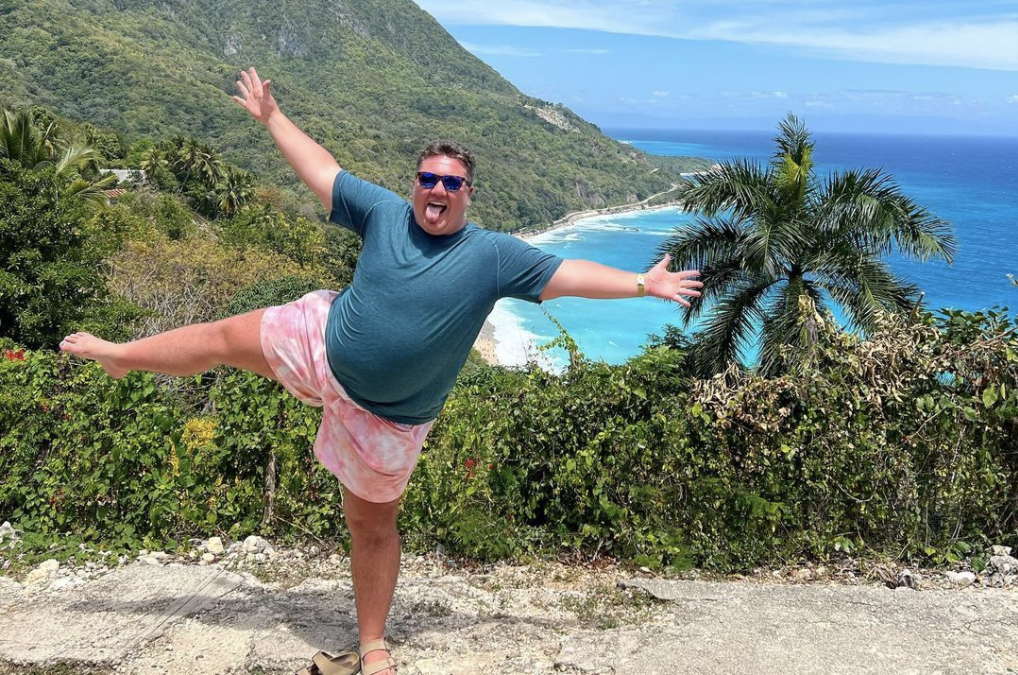
Apr 4, 2022 | Programming Spotlights, Sedona Yoga Festival Teacher Feature
At the very beginning of our conversation, Allé K says that as a trans yoga teacher, he’s over-the-moon to be kicking off Pride Month by teaching at SYF this year. “I’m really excited to bring some in-person pride classes to SYF,” he says. “I also went to most of high school in Arizona, so I’m excited to return home, in a sense. It feels a bit full circle. And the desert is just really magical and healing,” he says.
Allé’s offerings are centered around truly promoting diversity and inclusion in yoga, and he’s passionate about being sure that all bodies feel like they have a place in practice. “Pride is one time a year where we get to really celebrate our trans identities and be out and loud about it,” he says. “It’s a joyful time for trans folks. I’m also a fat yoga instructor, in a larger body,” he says, so his classes typically center fat folks.
When asked what trans and fat affirming classes are all about, Allé says that it’s really about holding space. With his kapha-dominant dosha, Allé acknowledges that space-holding is one of his specialities. “How can we really show up and not try to put our perspectives on others?” he says. His classes encourage all participants — both in the class and beyond — to truly breathe deeply, and consider how to be an embodied person.
For people who identify as queer or trans, Allé says that his presence at the front of the class alone is validating. “Just having a teacher of your shared identity is really important,” he says. But this is equally important for cisgender students as well — being around trans folks is a crucial first step toward cultivating compassion, and living from a place of true yoga. This is what begins to activate a kind of living yoga in a person’s life. As an example, he acknowledges that correct pronoun usage is ahimsa. “Letting go of attachment to the gender binary, to the way you perceive a person’s gender — that’s ishvara pranidhana,” he says. “It’s about humility, understanding, and removing the ego. It’s about acceptance, and that’s the yoga.”
How This Plays Into Grace
Having studied with Dharma Mittra in NYC, Allé has no qualms talking about God, and the idea of God. For him, God is trans, fat, and speaks openly to him. He acknowledges that many trans folks have a difficult time talking about God, but for him it’s all part of the same conversation around ahimsa, which brings the idea of grace into play.
“Yoga means advocating for those on the fringes of society,” he says. “How can we get to the goal of collective liberation — which is the goal of yoga — if we don’t consider yoga a liberatory practice for everyone?” To Allé, this means lifting up BIPOC voices, queer and trans voices, fat voices, South Asian voices, etc. “It’s inherently connected to our liberation as a collective,” he says. When we acknowledge this and work toward it in earnest, we are working and operating in grace, and in God.
How We Can Take These Practices Off the Mat
To practice what Allé preaches off the mat, there are lots of simple ways that you can do so. “Put your pronouns in your Instagram bio, your Zoom name, your website page, and email signature,” he says. “If you don’t have any trans friends yet — or you have one, but you don’t want to bog them down — educate yourself about the community!” This is as simple as watching shows or movies. You can also advocate. If, for example, you live in Arizona, pick up the phone and call your representative, voicing that you don’t want anti-trans laws in effect.
And, says Allé, “pass the mic by literally doing what SYF is doing, by giving me a platform to teach at the festival.” We will all benefit when we work collectively toward this kind of liberation. “We want and need trans folks in this world,” says Allé. “We are a light, we are magical beings and we need us in this world. Trust me, YOU need us in this world.”
Learn from Allé in person this June 2–5 at SYF! Get your ticket today: https://bit.ly/SYF22Tix

Mar 30, 2022 | Programming Spotlights, Sedona Yoga Festival Teacher Feature
Fern Conn, who opened her yoga studio Dancing Lion in the midst of the Covid-19 pandemic, is no stranger to the struggles and challenges that the past couple of years have wrought. “There’s not a single soul that has not been affected by the goings-on in the world in the past couple of years,” she acknowledges. “We all have this newfound grace to keep that softness, that tenderness in our hearts, so that we don’t go back to the ‘old ways,’” she says. The theme for SYF2022, Give It Up For Grace, is one major reason she was drawn to the event. Heart-centered, soft, and tender is how she teaches — and what she’s excited to share with the SYF community this June.
One of her signature classes, Devotional Flow, is something she’s excited to share, as well as her tongue-in-cheek named Yin & Tonic, in which she combines yin yoga with another healing modality, such as acupuncture or yoga nidra. Though Fern has a dance background, she tends to integrate more than just movement into her classes, encouraging practitioners to consider their reason for being there, rather than just showing up.
“What is your true north?” she asks students. “What has the last couple of years really brought up for you as an important aspect of your wellbeing in life?” That’s how her classes become a meditation on living as well as a practice, making her energetic and emotional-based approach resonate with so many.
Why An Anatomical Approach Isn’t How She Teaches
Trained in dance at The Martha Graham Dance Studio as well as other studios in New York City, Fern has plenty of alignment based experience, and a physical approach is very much in her wheelhouse. “I believe that a lot of the anatomical cues we have used in the past simply do not work for many students,” she says. “I teach to the bodies in front of me. When you force someone into a Warrior I with a heel to arch alignment, it simply does not always make sense. For example, when I have middle aged women from Boca Raton in my class, they simply have a different range of motion than 12 year old boys in India who first practiced yoga. The body needs to be tended to.”
This fluidity is one thing that people can expect to take away from her classes at SYF. She also hopes to impart a “felt experience” for practitioners, she says. “I weave a very rich thematic experience into every class,” she says. She feels the energy of the room, and teaches from that perspective.
She’s quick to note that that doesn’t mean that she thinks everyone will walk away from her classes happier — she’s not into the kind of spiritual bypassing that doesn’t allow for true emotional processing through practice.
“Lately, I’ve felt a great heaviness stirring in people,” she says. “Sometimes we get deep; we’re moving energy, the debris that sits in our connective tissue, and we’re stirring that up. I think to just be able to hold space for that is the ultimate goal,” she says.
A Warm Feeling
That’s not to say that Fern doesn’t want people to feel good when they leave her class, she says. Her goal is to at least leave people feeling better than when they came — and it’s safe to say that SYF attendees will receive that type of nourishment. “I treat my studio like an extension of my home,” she says. “That’s the energy that I hope to bring to SYF. I love the fact that people are gathering again, especially practicing yoga and meditation. We just need more light.”
Experience that light and warmth with Fern this June! Tickets are on sale now! Get yours here — bit.ly/SYF22Tix
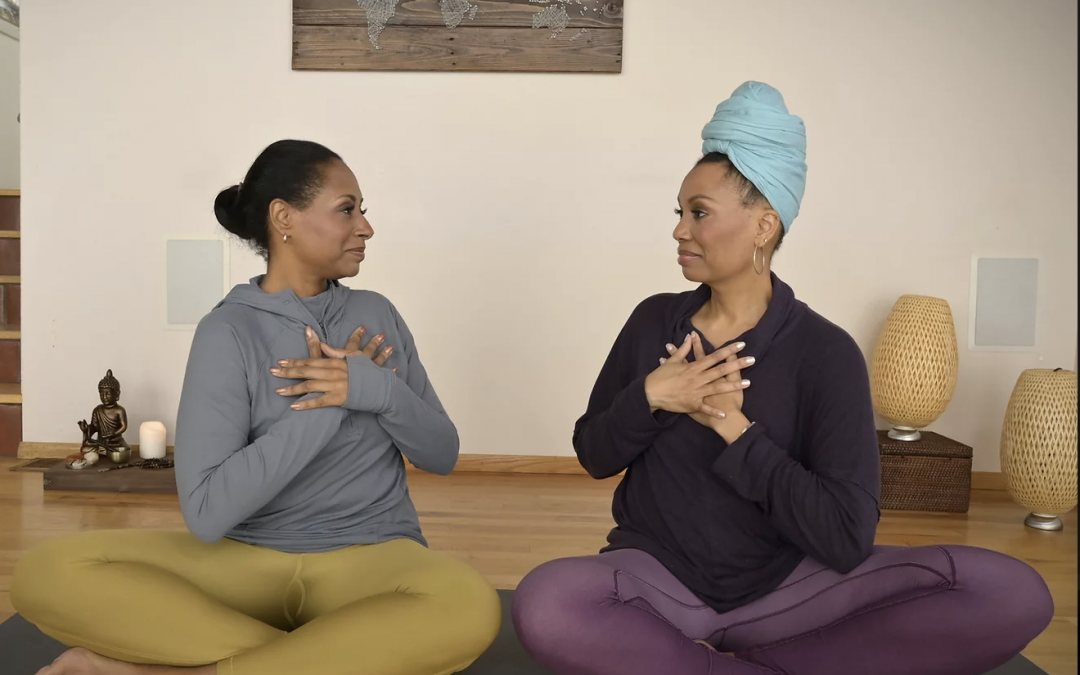
Mar 28, 2022 | Programming Spotlights, Sedona Yoga Festival Teacher Feature
The Yoga for PTSD Training has long been a signature offering of Sedona Yoga Festival. It’s just one of the many ways that SYF walks the walk — by recognizing that yoga is so much more than asana, and requires instructors to not only commit to furthering their education, but to consider ways to make their classes welcoming and accessible to all people.
This year, we couldn’t be more excited that the training will be led by the founders of Retreat to Spirit, Amina Naru and Pamela Stokes Eggleston, joined by instructor Kwasi Boaitey. We’ll be examining trauma-informed instruction through the lens of not just PTSD, but social trauma as well, and exploring how to truly make a yoga class welcoming for all practitioners, regardless of race or background. We’ll also address the importance of creating a space that truly embodies the teachings of yoga, and how they pertain to issues in our greater world — how we can address the traumas of the world, and still create a refuge in our practice.
We sat down (digitally) with Amina and Pamela to discuss.
* * *
Sedona Yoga Festival (SYF): How did you get started doing trauma-informed work, and what can we expect from the training in June?
Amina Naru (AN): Pam and I are the former co-executive directors of the Yoga Service Council. Pamela was working with veterans and caregivers, and I had my own business working with incarcerated youth and adults. Through the Yoga Service Council we created a Best Practices series with Omega, a series of books that outlined yoga for people who were incarcerated, people recovering from drug addictions, and for schools.
While working with the YSC we petitioned YA to make it a mandatory part of 200-hrs, or perhaps 220hrs. We are currently actively working to make trauma-informed training a staple in 200hr teacher training. Because everyone has experienced some sort of trauma. And people who have aren’t just showing up in prisons or community centers or the VA — we’re showing up in the yoga studio and in “mainstream” yoga.
Pamela Stokes Eggleston (PE): There are plenty of microaggressions happening within yoga spaces, and it’s causing more harm than good. It’s multi-layered. Yoga teachers are stepping into their classes with an intention to serve or help, but often first-time students walk away from a class thinking “it’s not for me,” or didn’t have a good experience — and it’s due to a lack of training for new teachers.
Really teaching asks you to teach to who shows up in the room, and to really see that person. It also requires basic self inquiry and self reflection. We always talk about the yamas and niyamas, but to integrate them may take someone really examining the way they’ve done things. We know that yoga is an embodied practice — a mind, body, spirit practice. We know that people are getting the bare minimum in a 200-hour YTT, and often a 500-hour YTT. But how can we transmute what has been looked out, to not stay on the surface level of spiritual bypassing that “we are all one”? We can’t ignore the fact that George Floyd got murdered or that there are people in the Ukraine and Russia who don’t want this war. We need to speak to what’s happened. There was trauma as a result of Covid, for example — we need to be able to serve people in these difficult times. That’s the kind of information we’re plugging in, adjusting our training to reflect.
The terms “trauma” and “trauma-informed” are always going to be evolving, because there’s always going to be trauma. It’s really about how we look at it, how we go through it — it’s how the yoga teaches us to ride the waves. The reason I believe that we are here and why we’re at a precipice is because we’ve danced around trauma. We’ve been so individualistic, particularly in Western societies, that we don’t see ourselves in others. This is a different level of work. You have to be willing to change and shift your practice. This goes beyond the studio. This is an inside job.
SYF: What about people who think that politics don’t belong in practice? That yoga is an escape?
AN: There’s a negative connotation around what politics is, what a politician is. But if you really look at it, politics are just life happenings. Life happenings are war. Life happenings are Black people getting murdered by cops — life happenings are Black Lives Matter. People come to yoga to escape — and that’s when the bypassing happens. The new reality and the new paradigm and the new ways of thinking — we have to step into that as yoga teachers, yoga therapists, as whatever the work we’re doing in this healing space. If we are not willing to do that work, and this would be my kind of mantra, one of many, to anybody that signs up for this program: You have to be willing to step into that full on and go through it.
Don’t miss this incredible opportunity to learn from these luminaries. You may purchase a single ticket to the Trauma-Informed Training, or as an an add-on to your All-Access Pass. Learn more about ticketing options here.
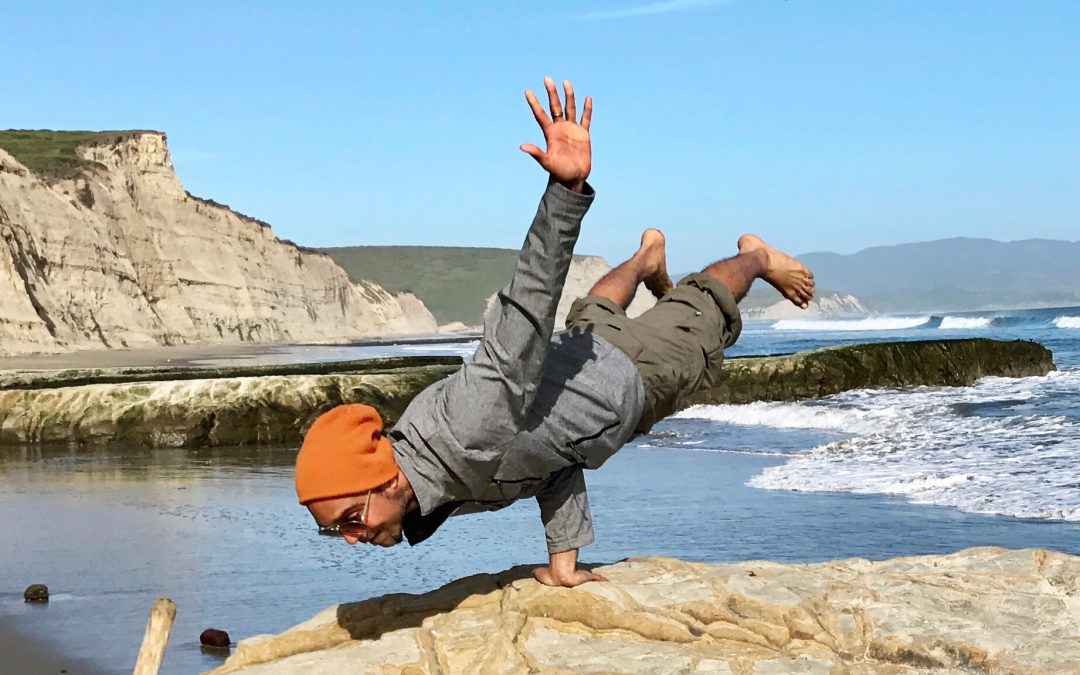
Mar 16, 2022 | Programming Spotlights, Yoga Interviews
Hawah Kasat: Finding Yoga Everywhere
Yoga is all around us — in art, in poetry, in colorful food, in the small moments of magic that make life full of beauty and wonder. For Hawah Kasat, who weaves art and sacred activism and a plethora of healing modalities into his teaching around the world, it’s all about the transformational experience that the container of a yoga practice can provide.
“It’s important to see the mind-body connection,” he says, “because I think our world is spinning out of balance. Our social, economic, and political systems are driven by the head — they require us to move fast.” This is antithetical to the spiritual human experience. Yoga, says Hawah, allows us to connect to the heart; to take time and consider other people before ourselves. It requires patience with our movements, which translates into our lives.
Hawah says that the blending of modalities and the infusion of art and sacred activism to his teaching fosters an opportunity to bring true peace and understanding to the world. “For me, the reason it’s important to connect social justice with mindfulness,” he says for example, “is because it allows us to become whole again. To see past the illusion of separation. It allows us to realize that there’s great opportunity in creativity to bring peace to the world — by realizing that we’re not as different as we think we are.”
To say — some people may discover the universal understanding of yoga through the lens of a “ninja training ground” or poetry (both of which are offerings that Hawah plans to bring to SYF this June), while others may resonate with a more traditional asana practice. However it resonates with someone, Hawah says, it leads to the place of knowing that “our healing journey is one that we do together. It’s not one that we do in a bubble, you know?”
Bringing the Practice Back to Communities
This is all fine and well, of course, for people who are able to experience a transformative weekend at a yoga festival. What about people who for one reason or another are unable to share in that experience? “It’s important to remember that without taking time for ourselves,” says Hawah, “we are not able to actually show up and support others. There is a really deep need to work on our own individual healing, because that’s the only way we can show up to support and heal others.”
He says that spaces like SYF are integral not only for teachers and aspiring teachers for this reason, but for anyone who is just needing to find joy in their life, and to realize that they are not alone. “It can be tough to wake up these days,” he says, “when you see what’s on the news and what’s happening in our communities, and with the isolation of the pandemic. It’s when we’re together and we’re breathing together and we’re laughing together and meditating together — these are the moments that remind us what’s important. And these are the moments that give us the fortitude to go back into our communities and be inspired,” he says.
How Grace Plays a Role
This is part of what grace is for Hawah — but he says that there’s also an element of kindness, generosity, and forgiveness when we discuss the idea of grace. When we operate from a place of grace we are allowing ourselves to go with the flow, resisting the temptation to force something. When we live with grace, he says, “there’s something beautiful beyond our wildest imagination and dreams. In the mystical sense, grace is about opening up to — and being okay with — the unknown. In the ultimate sense, grace requires a deep trust in the world and in the universe.”
Hawah will be sharing spoken word at the opening ceremony for SYF, as well as several other unique offerings. Join him and other luminaries this June 2–5 at stunning Posse Grounds Park. Tickets on sale now!









